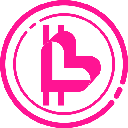-
 bitcoin
bitcoin $95203.028270 USD
-4.12% -
 ethereum
ethereum $3151.730711 USD
-1.61% -
 tether
tether $0.999170 USD
-0.04% -
 xrp
xrp $2.273039 USD
-1.55% -
 bnb
bnb $924.288432 USD
0.14% -
 solana
solana $141.112899 USD
-2.02% -
 usd-coin
usd-coin $0.999964 USD
0.02% -
 tron
tron $0.293976 USD
0.82% -
 dogecoin
dogecoin $0.160772 USD
-1.84% -
 cardano
cardano $0.506357 USD
-3.90% -
 hyperliquid
hyperliquid $37.900515 USD
0.03% -
 zcash
zcash $644.358451 USD
26.66% -
 chainlink
chainlink $14.062007 USD
-2.60% -
 bitcoin-cash
bitcoin-cash $484.381072 USD
-5.12% -
 unus-sed-leo
unus-sed-leo $9.199874 USD
0.27%
What is a data availability layer and how does it help rollups become more secure and cheaper?
A data availability layer ensures rollups publish transaction data securely, enabling verification, reducing costs, and enhancing scalability without sacrificing decentralization.
Nov 08, 2025 at 08:39 pm

What Is a Data Availability Layer?
1. A data availability layer is a foundational component in blockchain infrastructure designed to ensure that transaction data posted by rollups is publicly accessible and verifiable. Unlike traditional blockchains where execution, consensus, and data storage happen on-chain, modular blockchains separate these functions. The data availability layer specifically handles the storage and verification of transaction data without processing or executing transactions.
2. Rollups, such as optimistic and zk-rollups, execute transactions off-chain and then post compressed transaction data back to the base layer, typically Ethereum. However, for security, it's essential that this data remains available so any node can re-execute transactions if needed. Without guaranteed data availability, malicious actors could hide transaction details and compromise the integrity of the system.
3. Data availability layers use techniques like data erasure coding and fraud proofs to allow light clients or validators to verify that all data has been published without downloading the entire dataset. This ensures decentralization and scalability while preserving trust-minimized access to information.
4. Examples include Ethereum’s current reliance on its own L1 for data posting, Celestia’s dedicated data availability network using Tendermint and erasure coding, and projects like Polygon Avail and Near DA. These systems are optimized to handle high throughput of data with minimal overhead.
How Does It Enhance Rollup Security?
1. Ensuring full transparency of transaction batches is critical for rollup security. If a sequencer posts state roots but hides the underlying transaction data, users cannot challenge invalid state transitions. A robust data availability layer prevents this by making data publication a prerequisite for finality.
2. In optimistic rollups, challengers must have access to transaction data to detect and dispute fraudulent claims during the challenge period. Without a reliable data availability solution, attackers could submit invalid blocks and prevent honest nodes from generating fraud proofs, undermining the entire security model.
3. Even in zk-rollups, although validity proofs guarantee correctness, data availability remains necessary. If the input data behind a proof is withheld, users cannot reconstruct account states or verify balances independently, leading to centralization risks and potential censorship.
4. By decoupling data availability from execution, networks reduce trust assumptions. Users no longer need to rely on centralized operators or sequencers to behave honestly. Instead, cryptographic and economic mechanisms enforce openness through distributed data publishing.
Why Does It Reduce Costs for Rollups?
1. Transaction fees on rollups are heavily influenced by how much they pay to publish data on the base layer. On Ethereum, calldata costs scale linearly with data size. By leveraging a specialized data availability layer, rollups can post data more efficiently using methods like blob-carrying transactions or erasure-coded shares.
2. Dedicated data availability solutions often offer significantly lower costs per byte compared to general-purpose blockchains. For example, EIP-4844 introduced proto-danksharding to Ethereum, enabling cheaper data blobs that cut rollup fees by up to 90% in some cases.
3. Modular architectures allow rollups to choose cost-effective data markets. Instead of being locked into one expensive chain, they can opt for external layers like Celestia or Avail, which are built for high-throughput, low-cost data settlement.
4. Efficient encoding and sampling techniques mean that even lightweight devices can participate in data availability checks. This broadens validator participation, increases competition, and drives down service prices over time.
Frequently Asked Questions
What happens if data is not available in a rollup system?
If transaction data is not available, users lose the ability to verify the correctness of the state. In optimistic rollups, this prevents fraud proofs from being generated, allowing invalid blocks to be finalized. In zk-rollups, while proofs are valid, users cannot audit inputs or reconstruct balances, creating opacity and centralization risk.
How do data availability proofs work?
Data availability proofs rely on erasure coding, where original data is expanded into redundant fragments. Light clients randomly sample portions of the encoded data. If enough samples are available, they can statistically confirm full data publication without downloading everything. Missing pieces indicate withholding, triggering alerts or penalties.
Can a data availability layer support multiple rollups simultaneously?
Yes, most modern data availability layers are designed to serve multiple rollups. They act as shared settlement layers for data, enabling interoperability and reducing duplication. Each rollup submits its batch in a segregated namespace, ensuring isolation while benefiting from pooled security and lower costs.
Disclaimer:info@kdj.com
The information provided is not trading advice. kdj.com does not assume any responsibility for any investments made based on the information provided in this article. Cryptocurrencies are highly volatile and it is highly recommended that you invest with caution after thorough research!
If you believe that the content used on this website infringes your copyright, please contact us immediately (info@kdj.com) and we will delete it promptly.
- Hedera, Bitcoin, BTCFi: WBTC Integration Sparks DeFi Evolution
- 2025-11-16 00:05:01
- Shanklin Veterans Get a Pre-Christmas Treat: A Heartwarming Gathering
- 2025-11-15 23:25:01
- Zero Knowledge Proof (ZKP): Revolutionizing Crypto Presales with Fairness and Transparency
- 2025-11-15 23:25:01
- SEC, Crypto Assets, and Classification: A New York Minute on Regulation
- 2025-11-15 23:20:01
- ASTER, UNI, and Zero Knowledge Proof: Decoding the Crypto Buzz in NYC
- 2025-11-15 23:20:01
- Crypto Presales with 10x Potential: Finding the Next Big Thing
- 2025-11-15 23:15:01
Related knowledge

What is the difference between a blockchain and a distributed ledger technology (DLT)?
Nov 14,2025 at 08:59pm
Understanding the Core Structure of Blockchain and DLT1. A blockchain is a specific type of distributed ledger technology that organizes data into blo...

How does a blockchain handle data storage?
Nov 14,2025 at 04:40pm
Understanding Blockchain Data Structure1. A blockchain stores data in sequential blocks, each containing a list of transactions or records. These bloc...

What are the risks of investing in blockchain projects?
Nov 14,2025 at 10:19am
Risks Associated with Volatility in Cryptocurrency Markets1. The price of digital assets can shift dramatically within minutes due to speculation, new...

What is the role of blockchain in creating a circular economy?
Nov 15,2025 at 02:19am
Enhancing Transparency in Supply Chains1. Blockchain technology provides an immutable ledger that records every transaction across supply chains, ensu...

How can blockchain technology be used in healthcare?
Nov 14,2025 at 07:39pm
Secure Patient Data Management1. Blockchain enables decentralized storage of medical records, ensuring patients maintain control over who accesses the...

What is a light node versus a full node in a blockchain?
Nov 15,2025 at 02:00pm
Understanding Light Nodes in Blockchain Networks1. A light node, also known as a lightweight client, does not download the entire blockchain. Instead,...

What is the difference between a blockchain and a distributed ledger technology (DLT)?
Nov 14,2025 at 08:59pm
Understanding the Core Structure of Blockchain and DLT1. A blockchain is a specific type of distributed ledger technology that organizes data into blo...

How does a blockchain handle data storage?
Nov 14,2025 at 04:40pm
Understanding Blockchain Data Structure1. A blockchain stores data in sequential blocks, each containing a list of transactions or records. These bloc...

What are the risks of investing in blockchain projects?
Nov 14,2025 at 10:19am
Risks Associated with Volatility in Cryptocurrency Markets1. The price of digital assets can shift dramatically within minutes due to speculation, new...

What is the role of blockchain in creating a circular economy?
Nov 15,2025 at 02:19am
Enhancing Transparency in Supply Chains1. Blockchain technology provides an immutable ledger that records every transaction across supply chains, ensu...

How can blockchain technology be used in healthcare?
Nov 14,2025 at 07:39pm
Secure Patient Data Management1. Blockchain enables decentralized storage of medical records, ensuring patients maintain control over who accesses the...

What is a light node versus a full node in a blockchain?
Nov 15,2025 at 02:00pm
Understanding Light Nodes in Blockchain Networks1. A light node, also known as a lightweight client, does not download the entire blockchain. Instead,...
See all articles










































































